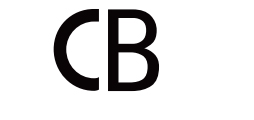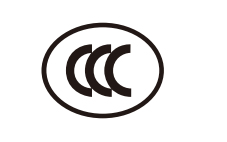The certifications or marks are the quality guarantee of products approved by an organization or government. Relevant certification or marks can help consumers purchase the satisfied product more easily. For manufacturers, certifications or marks offer the ability to reap more profits and increase competitiveness among the national market. Learning more about the certifications or marks, we are able to distinguish whether the LED lights are eligible. There are various certifications and marks of LED lights formulated for different functions all over the world. You may doubt the pattern and wonder what they mean and how they work. We would like to show you the more common parts of them. The certifications or marks will be introduced to the requirements of different markets.
Australia
-
RCM
The Regulatory Compliance Mark (RCM) is a certification that indicates compliance with electrical safety, EMC, EME & telecommunication requirements, as applicable to each product. RCM compliance label includes the requirements of durability, legibility, positioning, font, and size of the products.
-
SAA
The Standards Association of Australia (SAA) establishes the standard of electronics to test whether they are safe enough for daily use. For example, the safety performance of an appliance is checked by using it under uninterrupted overload in high-temperature conditions to make sure the premium quality of electronics.

International
CB 
The Certification Bodies’ s Scheme (CB) has its origin in the European "Commission for Conformity Testing of Electrical Equipment" (CEE) which merged with the IEC in 1985. It is a multilateral agreement to allow international certification of electrical and electronic products so that a single certification allows worldwide market access.
European
-
CE
CE is the abbreviation of European Conformity. The CE marking is not a quality indicator or a certification mark, but a safety declaration. It declares the products meet the EU standard and essential requirements for health, safety, environmental protection, etc,.
-
ENEC
European Norms Electrical Certification (ENEC) is the mark for electrical products that demonstrates compliance with European Standards. It is planned by the European Committee for Electrotechnical standards for products like lighting fixtures, relevant accessories and data equipment. Monitoring products and production then provides safety assurance throughout the lifetime of ENEC certification.
-
RoHS
Restriction of Hazardous Substances (RoHS) is an EU standard to regulate the material and process of electronic and electrical products, making them more conducive to human health and environmental protection. The purpose of this standard is to eliminate lead, mercury, cadmium, hexavalent chromium, polybrominated biphenyls and polybrominated diphenyl ethers in electrical and electronic products. It is emphasized that the content of cadmium cannot exceed 0.01%.
-
TUV
TUV stands for Technischer Überwachungsverein in German and means “Technical Inspection Association” in English. The purpose of the association is to prevent personal injury and property loss during the use of household appliances, mechanical products and automotive products, including electric shock, excessive temperature or fire, mechanical hazards, radiological hazards and chemical hazards.
-
GS
The GS (Geprüfte Sicherheit) stands for the products that are tested safety. It marks that the equipment meets German and, if available, European safety standards for such devices. Although the GS mark is not a legally mandatory requirement, it is widely accepted worldwide.
-
WEEE
The Waste Electrical and Electronic Equipment (WEEE) Directive is set for collection, recycling and recovery targets for all types of electrical goods. The directive aims to reduce the amount of waste electrical and electronic equipment, promote its recycling and improve the environmental efficiency of the process from production to disposal.
America
-
DLC
The Design Light Consortium (DLC) is a certification for commercial LED lights based on their color rendering capabilities, lumen maintenance, longevity, light distribution and output, and the duration of the warranty period. It is used for lighting products like retrofit kits, industrial-grade lighting panels, high bays, wall packs and roadway luminaires.
-
ETL
The Edison Testing Laboratories (ETL) is an equipment safety certification program operated by a laboratory called Intertek. Any electrical, mechanical or electromechanical product with ETL mark indicates that the product has reached the minimum requirements of the generally recognized safety standards of the United States or/and Canada, and it has been tested to meet the relevant product safety standards.
-
UL
The Underwriters Laboratories (UL) is a global safety certification company approved to safety testing for most of the products. It not only tests electrical and fire safety but also broader safety issues, such as hazardous substances, environmental sustainability, food safety, etc,.
-
FCC
The Federal Communication Commission (FCC) is responsible for ensuring the safety of the security of electromagnetic radiation of electric products. The electronic products, either manufactured in the US and have been exported or are sold in the US, should follow the requirement of FCC.
Japan
PSE
PSE certification is a Japanese compulsory safety certification, used to prove that electrical and electronic products have passed the Japanese Electrical and material safety law (DENAN Law) or the international IEC safety standard test.
China
CCC 
The China Compulsory Certification (CCC) is a product conformity assessment system implemented by the Chinese government in accordance with laws and regulations to protect personal safety and national security and strengthen product quality management.
Others
-
EMC
Electromagnetic compatibility (EMC) is the ability of electrical equipment and systems to function acceptably in their electromagnetic environment. Most of the EMC standards of different countries are based on the IEC. The EMC restriction applies to all electrical or electronic apparatus, and installations that may cause electromagnetic interference or receive electromagnetic interference that affects themselves.
-
SASO
The Saudi Arabian Standard Organization is responsible for formulating national standards, including measurement and labels for all commodities and products. The standards are based on IEC and the organization deletes or adds items according to their climate, custom, and environment.
-
NSF
The National Sanitation Foundation (NSF) is an organization dedicated to being the leading global provider of public health and safety-based risk management solutions. The purpose of the food equipment standard is to establish minimum food protection and sanitation requirements for the materials, design, fabrication, construction, and performance of food processing and handling equipment.
-
D-Mark
D-MARK is a European fire protection certification for the lights that are normally used in dust places and its surface temperature limits basically comply with EN60598-2-24 standard. Luminaires marked with the D mark meet these conditions and are therefore suitable for use in rooms with particular fire risk.

Design Award
-
Red dot award
The Red Dot Design Award is a German international design prize category for product design, brand and communication design, and design concepts. The competition is open to several fields of manufacturing, including furniture, home appliances, machines, cars, and tools.
-
iF DESIGN AWARD
The iF Design Award is conferred by the iF International Forum Design and spans multiple disciplines. It is known for its "independent, rigorous, and reliable" award concept. It also aims to make contributions to design services and to increase public awareness of the importance of design.















